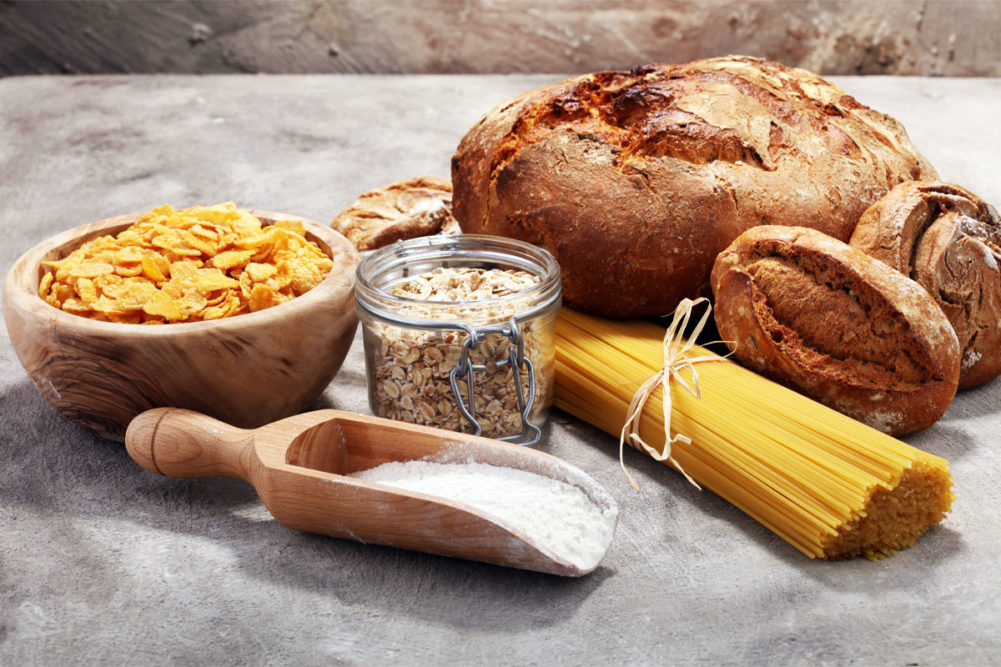Nearly one out of five respondents to the 2023 Food and Health Survey from the International Food Information Council (IFIC), Washington, agreed that foods labeled as a source of whole grains are suggestive of a healthy food. The shoppers likely look for taglines such as “made with whole grains” and “whole grain nutrition.” A growing number of marketers are including such callouts on packages to add a healthful halo, sometimes even on foods traditionally not considered “healthful” foods, such as sugary breakfast cereals and salty snacks.
Nestle Toll House refrigerated cookie dough, for example, now offers varieties promoted as being not only “whole grain” but also “plant-based,” both marketing tactics to attract the health and wellness shopper. While whole wheat flour is the second ingredient, sugar is the first. Front panels call out that there are 9 grams of whole grain in one cookie, which also contains 11 grams of added sugar (22% of the Daily Value). That whole grain contributes 1 gram of fiber, and in combination with some pea protein — in place of eggs — provides 1 gram of protein.
What makes it whole?
Whole grains, as well as foods made from them, consist of the entire grain seed, usually called the kernel. The kernel features three components: the bran, the germ and the endosperm. If the kernel has been cracked, crushed or flaked, it must retain nearly the same relative proportions of bran, germ and endosperm as the original grain to be called whole grain. With refined grains, most of the bran and some of the germ is removed, resulting in the loss of dietary fiber, vitamins, minerals and an array of phytonutrients.
The 2020-2025 Dietary Guidelines for Americans (DGAs) recognize whole grains as “one of the three food groups that are fundamental constituents of a healthy dietary pattern.” But while the DGAs make recommendations on whole grain consumption, the US Food and Drug Administration currently does not offer any guidance or requirements on calling out whole grains in the Nutrition Facts. There is also no established Percent Daily Value for whole grains, which means content claims such as “excellent source” and “good source” are not an option for marketers. A “full serving” of whole grains, however, was established by the Whole Grain Council as being 16 grams.
The current DGAs maintained the prior recommendation for the average healthy American adult to consume six 1-oz servings of grain foods daily, with half of the servings coming from whole grains. For the first time, the DGAs included recommendations for birth to two years, meaning little ones need their whole grains, too.
Baby food brands such as Gerber now include whole grains in some offerings. The 2nd Foods Sweet Potato Turkey with Whole Grains Dinner contains whole grain oat flour and brown rice flour to provide 6 grams of whole grains per serving. The banana and summer berries variety of the brand’s Organic Grain & Grow Morning Bowl line is formulated with three whole grains — oats, barley and quinoa — providing 10 grams of whole grains per serving.
The DGAs explain that an easy way to tell if a food product is high in 100% whole grains is to make sure it is listed first or second in the ingredient list. Or choose unprocessed whole grains, which include amaranth, barley, brown rice, buckwheat, bulgar, corn, kamut, millet, quinoa, rye, oats, sorghum, spelt, teff, triticale, wheat berries and wild rice.
That’s what you find in Sun Chips, where whole corn is the first ingredient followed by sunflower and/or canola oil. Whole wheat and brown rice flour come in third and fourth. One serving contains 18 grams of whole grains and 2 grams of fiber.
Sun Chips packages feature the Whole Grain Stamp, which was created by the Whole Grains Council, Boston, and started appearing on products on store shelves in mid-2005. There are three versions of the Whole Grain Stamp. If a product bears the 100% stamp, then all of its grain ingredients are whole grain. There is a minimum requirement of 16 grams of whole grain per serving. That’s what is on Sun Chips.
If at least half of the grain ingredients in a product are whole grain, it may feature the 50%+ stamp. There is a minimum requirement of 8 grams of whole grain per serving. This stamp was added to the Whole Grain Stamp family in January 2017 and began appearing on products in the spring and summer of 2017.
With the Basic Stamp, a serving of the food must contain at least 8 grams of whole grain but may contain more refined grain than whole. Each stamp also shows how many grams of whole grain ingredients are in a serving of the product.
There really is not a stamp for products like the Nestle Toll House refrigerated cookie dough. While it is made with 100% whole grain, a serving does not meet the minimum threshold.
Private label retailer Aldi Inc., Batavia, Ill., sells Kirkwood Whole Grain Chicken Breast Fries. The ingredient statement has whole wheat flour as the second ingredient, after chicken; however, two non-whole grains — wheat flour and yellow corn flour — follow. As a result, the product only flags on the package that it’s “made with whole grain breading.” Nowhere does it quantify the grams of whole grains per serving; however, a serving does contain a total of 15 grams of carbohydrates. It is possible that the product may qualify for the 50%+ or Basic Stamp.
Compared to Kirkwood’s conventional chicken fries, the whole grain breaded version is slightly lower in calories, total fat and protein, on a weight basis. There is 1 gram of fiber in the whole grain version and the ingredient list is shorter, but it does cost more.
New Quaker Chewy Granola Cereal — the bowl version of the bars — is made from 100% whole grains, which according to the ingredient statement are whole grain oats, whole grain brown rice crisps and whole grain wheat, the top-three ingredients. As of now, packages do not feature a Whole Grain Stamp, nor do marketing materials promote the grams of whole grains per serving.
To stamp or not
As of June 2023, the Whole Grain Stamp could be found on more than 13,000 different products in 65 countries. About one-third of all stamped products may be found outside the United States. The top-three food categories featuring the stamp are bread, rolls and bagels; cold cereal; and snacks, such as pretzels, chips, crackers, etc. It’s not surprising that grain-based foods dominate use of the stamp, as it may be challenging to formulate the minimum of 8 grams of whole grains into a product not traditionally based on grains.
The stamp — along with its clean, simple recipe — has helped Elmhurst 1925, Elma, NY, set itself apart in the crowded refrigerated alternative milk category. One of Elmhurst’s most popular products is Unsweetened Milked Oats, which has an ingredient panel consisting of only three ingredients: whole grain oats, water and salt. The oat milk formulation includes the highest dietary fiber content in the industry, at 3 grams per serving. The brand also has packed in more whole grain oats than ever, loading the beverage with 25 grams of whole grains. It sports the 100% stamp.
Lotus Foods, Richmond, Calif., has either a 100% or 50%+ stamp on most of its dried soup products. Many of the soups are formulated with the company’s organic buckwheat and whole grain organic rice ramen.
Del Real Foods, Mira Loma, Calif., uses whole cooked corn to make the masa for its tamales. Rice flour also is part of the formulation, which limits the company to only the 50%+ and the Basic Stamp. Use varies by tamale variety. The pupusas feature the 100% stamp. The classic Latin American dish is corn and potato-based masa (potato is a vegetable, not a grain) that is stuffed with a variety of meat and cheese fillings.
A recent survey by the Whole Grains Council showed the Whole Grain Stamp is doing its job of getting shoppers to consume more whole grains. Two-thirds of consumers said seeing such third-party labeling gives them more confidence in the products they are buying. The survey also found a significant majority of consumers wish information about the whole grain content of products was included on product packaging, making clear that the information provided on the Whole Grain Stamp is valuable to shoppers. By stating the whole grain gram content of products, the stamp makes it easy to identify and compare whole grain products when shopping.
Trust in the Whole Grain Stamp has increased steadily, with 86% of all consumers now saying they trust it, the Whole Grains Council said. Consumer trust is even higher among young consumers and parents of young children. Three of four consumers surveyed said they would use the stamp as part of their purchasing decision, and most said they would be skeptical of any whole grain claims made on a product that did not use the Whole Grain Stamp.





